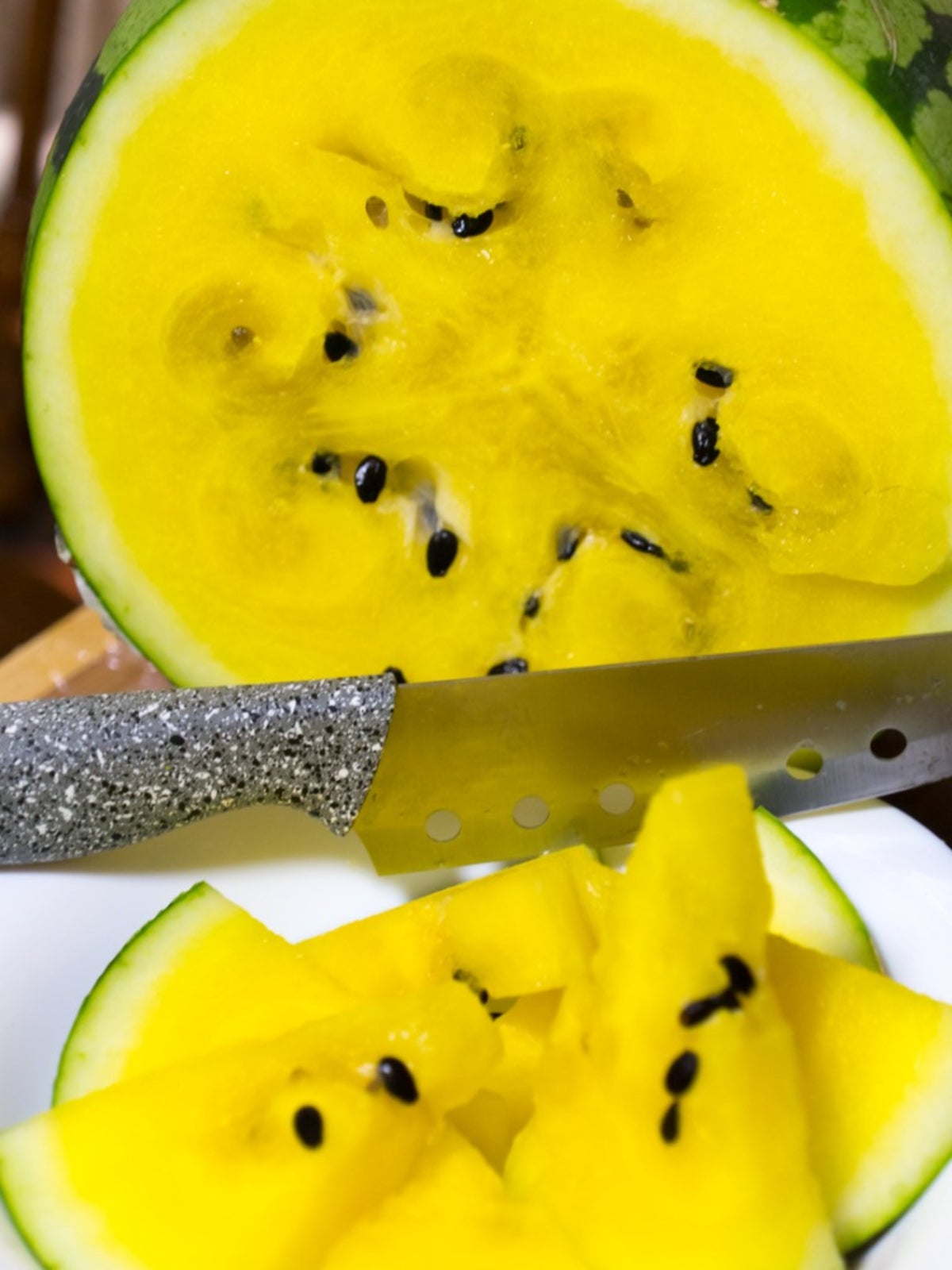Watermelon ‘Yellow Baby’ – Tips For Yellow Baby Melon Care


When asked to picture a watermelon, most people have a pretty clear image in their heads: green rind, red flesh. There might be more seeds in some than in others, but the color scheme is usually the same. Except that it doesn’t need to be! There are actually several yellow watermelon varieties on the market. While they may not be as popular, the gardeners who grow them often declare them to be even better than their red counterparts. One such winner is the Yellow Baby watermelon. Keep reading to learn more about Yellow Baby melon care and how to grow Yellow Baby watermelons.
Watermelon ‘Yellow Baby’ Info
What is a Yellow Baby watermelon? This variety of watermelon has thin skin and bright yellow flesh. It was developed in the middle of the 20th century by the Taiwanese horticulturist Chen Wen-yu. Known as the Watermelon King, Chen personally developed 280 varieties of watermelon, not to mention the countless other flowers and vegetables he bred over his long career. At the time of his death in 2012, he was responsible for one fourth of all the watermelon seeds in the world. He developed the Yellow Baby (marketed in Chinese as ‘Yellow Orchid’) by crossing a female American Midget melon with a male Chinese melon. The resulting fruit arrived in the U.S. in the 1970's where it was met with some suspicion but ultimately won the hearts of all who tasted it.
How to Grow a Yellow Baby Watermelon
Growing Yellow Baby melons is similar to growing most melons. The vines are very cold sensitive and seeds should be started indoors well ahead of the last frost in climates with short summers. The vines reach maturity 74 to 84 days after planting. The fruits themselves measure about 9 by 8 inches (23 x 20 cm.) and weigh about 8 to 10 pounds (3.5-4.5 kg.). The flesh is, of course, yellow, very sweet, and crisp. According to many gardeners, it is even sweeter than the average red watermelon. Yellow Baby has a relatively short shelf life (4-6 days) and should be eaten right away after it’s picked, although I don’t think this would really be an issue considering how good it tastes.
Gardening tips, videos, info and more delivered right to your inbox!
Sign up for the Gardening Know How newsletter today and receive a free copy of our e-book "How to Grow Delicious Tomatoes".

The only child of a horticulturist and an English teacher, Liz Baessler was destined to become a gardening editor. She has been with Gardening Know how since 2015, and a Senior Editor since 2020. She holds a BA in English from Brandeis University and an MA in English from the University of Geneva, Switzerland. After years of gardening in containers and community garden plots, she finally has a backyard of her own, which she is systematically filling with vegetables and flowers.
-
 12 Lush Alternatives To A Lawn For Sustainable Spaces
12 Lush Alternatives To A Lawn For Sustainable SpacesAlternatives to a lawn are beautiful and also beneficial to your local ecosystem and its pollinators. Explore our top picks for plants to replace grass.
By Tonya Barnett
-
 Types Of Tomatoes Explained: Explore The Many Wonderful Shapes, Colors, Flavors, & Best Uses
Types Of Tomatoes Explained: Explore The Many Wonderful Shapes, Colors, Flavors, & Best UsesThe world of tomato varieties is vast and fascinating. Learn about the key types to grow in your garden, tailored to your preferences and space.
By Amy Grant